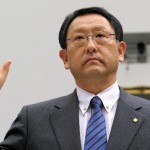
The recall by Toyota of around 6.4 million vehicles worldwide might be precautionary, but it will slash an estimated NZ$800 million off the carmaker’s first quarter profit, say investment analysts in the United States. Toyota won’t fit all the bill – it will share it with its suppliers, including its affiliated company Aisin Seiki, which made the potentially faulty seat rails involved in the recall. Toyota owns around 22 per cent of Aisin Seiki. Another supplier to Toyota has reportedly put aside NZ$65 million in provisions for costs. The recall also concerned a potential fault in an electric cable in the steering wheel column, which could deactivate the
driver-side airbag. It was Toyota’s second-biggest ever recall, trailing only the 7.43 million vehicles it called back in October 2012 to fix power-window switches on models including its Camry and Corolla cars. Toyota NZ will recall around 40,000 vehicles, made up of NZ-new RAV4, Prado, and Hilux models built between June 2004 and December 2010 and Yaris hatchbacks produced between January 2005 and August 2010. Used imports are also in the mix . The global recall couldn’t have come at a worst time for Toyota. Earlier this year, it recalled 2.1 million Prius, RAV4, Tacoma (US pick-up truck) and Lexus vehicles, because of a software problem that could cause the cars to stop suddenly. 
